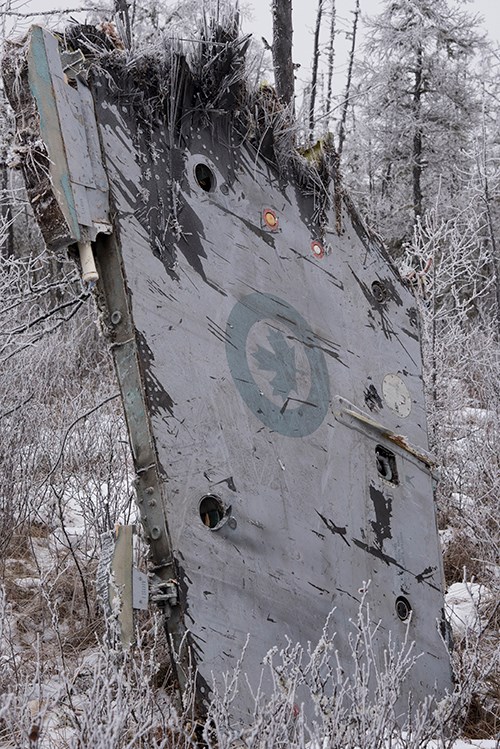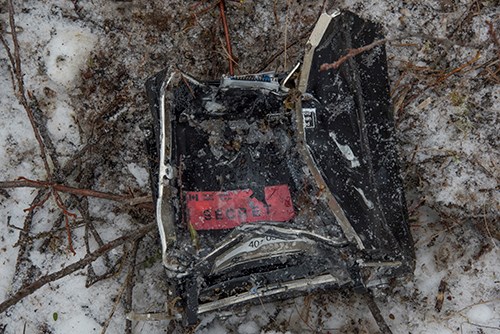The Department of National Defence’s Airworthiness Investigative Authority has released their final flight safety investigation report regarding the crash that killed Capt. Thomas McQueen.
On Nov. 28, 2016, near 4 Wing Cold Lake, McQueen was part of a two-ship formation for an air-to-ground training mission when his plane crashed into the ground, killing him instantly.
According to Lt.-Col. Martin Leblanc of the Department of Flight Safety, McQueen had been distracted during his training mission.
 Remains of the CF-18 Hornet were found following the fatal-crash that claimed the life of Capt. Thomas McQueen.
Remains of the CF-18 Hornet were found following the fatal-crash that claimed the life of Capt. Thomas McQueen.
“The occurrence was caused by human factors. The investigation couldn’t conclude to any material failure of any sort. Primarily, the accident was caused by distraction of the pilot from the primary task of avoiding the ground. He was distracted somehow and the aircraft was either allowed to maneuver in such a fashion, or the pilot maneuvered it in such a fashion that he reached 118-degrees left bank and about minus 17-degrees below the horizon to a point where it was unrecoverable,” he explained.
This indication is based on all of the evidence available to the investigative authority.
The training mission objective was to practice level deliveries to two Mark 83 bombs, followed by two laser-guided training rounds, simulating laser-guided bombs.
Pilots were instructed to ingress to the target and drop weapons from 600-feet above ground level, using a breakaway maneuver to avoid simulated bomb fragmentation.
According to the investigation report, McQueen was performing a bomb drop, and was approximately 500-feet above ground level when he initiated a steep left turn, reaching the maximum left bank angle of 118-degrees. The nose of the CF-18 began to pitch towards and then below the horizon, eventually reaching a nose-down pitch angle of minus 17-degrees, creating a large descent rate.
About 1.5-seconds before impact, the aircraft began rolling right.
No radio calls were made during the turn, and McQueen didn’t eject from the aircraft.
“It’s quite clear there was no attempt to eject on this accident flight,” Leblanc stated.
Leblanc confirmed the evidence didn’t support a mechanical failure, bird strike, or pilot incapacitation scenario.
McQueen, a Hamilton, ON native, had over 766 total flying hours with the military and carried a valid medical.
The Royal Canadian Air Force chain of command has initiated an investigation into the incident, however, Leblanc couldn’t provide any details.



